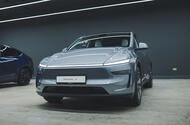Is Tesla Facing a Perfect Storm? What’s Really Behind the Recent Struggles
Why Are Investors Suddenly Nervous About Tesla’s Future?
For years, Tesla seemed untouchable. The company’s stock soared, its cars dominated headlines, and CEO Elon Musk was hailed as an industry disruptor. But lately, even Tesla’s most loyal supporters are starting to sweat. After a string of disappointing financial results, the mood has shifted from unbridled optimism to cautious concern.
One of the biggest red flags? Tesla’s automotive revenues dropped by 16% in the second quarter compared to last year. That’s not a small dip—it’s a sign that demand is cooling off. Deliveries fell 13%, and the number of unsold cars piled up, with inventory rising to 24 days’ worth of sales, up from 18 days previously. These aren’t just numbers on a spreadsheet; they’re warning signs that the company’s growth engine is sputtering.
Even Morgan Stanley’s Adam Jonas, a long-time Tesla bull, sounded the alarm after the latest earnings call, noting the lack of clear targets for revenue or margins. When your biggest champion starts asking tough questions, you know it’s time to pay attention.
How Are Shifting Government Policies Impacting Tesla’s Bottom Line?
Tesla’s business model has always leaned heavily on government incentives and regulatory credits. These credits—essentially payments from other automakers who need to offset their own emissions—have been a lifeline for Tesla’s profitability. But that lifeline is fraying.
Recent policy changes in the US have dealt a blow. The removal of the $7,500 EV purchase credit and relaxed emissions penalties mean less incentive for consumers to buy Teslas and less need for other automakers to buy credits. Tesla’s income from regulatory credits was slashed in half to $439 million last quarter. Without these, and with battery storage margins declining, Tesla would have posted a loss, according to Jefferies analyst Philippe Houchois.
Europe isn’t offering much relief, either. Stricter CO2 rules have forced legacy carmakers to roll out their own competitive electric models, reducing their reliance on Tesla’s credits. The result? A shrinking pool of easy money.
Is Tesla’s Product Lineup Still Competitive in a Crowded EV Market?
Tesla’s once-futuristic lineup is starting to show its age. While the refreshed Model Y has seen strong sales in the UK, it’s struggling elsewhere in Europe. In Germany—long a key market—sales plummeted 60% in June. Some analysts point to Elon Musk’s polarizing public persona as a factor, especially in markets sensitive to political and social issues.
Meanwhile, the much-hyped Cybertruck has failed to deliver. Tesla no longer breaks out its sales numbers, but combined deliveries of the Model S, Model X, and Cybertruck made up just 2.7% of total volume last quarter, after halving year-over-year. That’s a far cry from the blockbuster launches investors had hoped for.
The long-promised affordable Tesla? It’s not a brand-new model, but rather a stripped-down version of the Model Y. Production has started, but there’s no word yet on pricing or whether it will be enough to reignite demand.
What About Tesla’s Big Bets on Autonomy and AI—Are They Paying Off?
Elon Musk has never been shy about talking up the next big thing. Lately, he’s been pulling capital from the core car business and doubling down on artificial intelligence, self-driving technology, and the dream of robotaxis. The idea is bold: upgrade existing Teslas to operate as autonomous taxis, letting owners earn money while their cars drive themselves around town.
But the road to full autonomy is steep and winding. Tesla claims to have logged 7,000 driverless miles in Austin, Texas, with Model Ys running below 40 mph. Yet regulatory approval remains elusive, even in the US, and progress in Europe and China is even slower. Without robust sensor suites and proven safety records, widespread adoption is a long way off.
Industry experts remain skeptical. While Ford’s BlueCruise has gained approval in parts of Europe, Tesla’s Full Self-Driving (Supervised) system is still under scrutiny. Betting the farm on autonomy may excite investors, but it’s a high-risk, long-term play with no guaranteed payoff.
Are Global Headwinds Making Things Worse for Tesla?
Tesla isn’t alone in feeling the pinch. The entire automotive sector is grappling with global shocks—think supply chain disruptions, rising competition from Chinese EV makers, and volatile trade policies. Companies like Volvo, Stellantis, and Volkswagen Group have all reported financial pain in recent quarters.
But Tesla faces unique challenges. Its reliance on incentives and credits makes it more vulnerable to policy shifts. And as more automakers catch up on electrification, Tesla’s first-mover advantage is shrinking. The company’s struggles in key markets like Germany highlight how quickly fortunes can change in the fast-moving EV landscape.
What’s the Real Outlook for Tesla’s Next Chapter?
It’s tempting to write off Tesla’s current woes as a temporary blip. After all, the company has weathered storms before. But this time, the challenges feel more fundamental. Slowing sales, shrinking margins, and the loss of regulatory support are converging at a moment when the company is making massive bets on unproven technologies.
Even Tesla’s most ardent supporters are starting to hedge their bets. As Adam Jonas put it, Tesla is crossing the chasm to autonomy while absorbing slower volume, incentive cuts, tariffs, and investing in new initiatives that may not pay off for years.
The takeaway? Tesla’s future is far from certain. The company still has enormous potential, but the days of easy wins are over. To thrive, Tesla will need to adapt quickly, innovate relentlessly, and—perhaps most importantly—deliver on the promises that have kept investors and fans on the edge of their seats for so long.
For anyone watching the electric vehicle revolution, the next few quarters will be telling. Will Tesla regain its footing, or is this the start of a much tougher road ahead? One thing’s for sure: the world will be watching.

